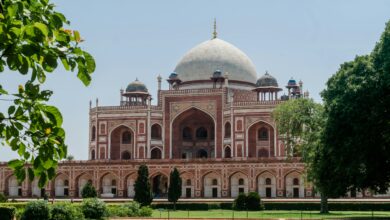Har Ki Dun Trek: Exploring the Enchanting Valley of Gods
Introduction
Nestled in the heart of the Garhwal Himalayas, the Har Ki Dun trek offers a surreal experience for nature enthusiasts and trekkers alike. Often referred to as the “Valley of Gods,” Har Ki Dun is a cradle-shaped valley surrounded by towering peaks and rich forests. This trek is not just a test of physical endurance but also a spiritual journey, with every step offering a deeper connection with nature and the Himalayan culture.
The Route and Major Highlights
Starting Point: Sankri
The journey begins from the quaint village of Sankri, situated at an altitude of 1,950 meters. Sankri is a well-known base camp for several treks in the region. The village itself is a picturesque location with traditional wooden houses and panoramic views of the surrounding mountains.
Day 1: Sankri to Taluka
The trek officially starts with a drive from Sankri to Taluka, a small village located at 2,100 meters. This drive is an adventure in itself, taking you through dense forests and along the Supin River. Once at Taluka, the trekking begins. The trail from Taluka to Seema is relatively easy, passing through beautiful forests of chestnut, walnut, and willow. Along the way, trekkers will cross a few wooden bridges over pristine streams and rivers.
Day 2: Taluka to Seema/Osla
From Taluka, the trek leads to the village of Seema or Osla, located at an altitude of around 2,560 meters. The trail is moderate, winding through lush greenery and picturesque landscapes. Osla is a particularly interesting village, known for its unique culture and architecture. The villagers here follow the same traditions that have been practiced for centuries, and the wooden carvings on the houses reflect the rich heritage of the region.
Day 3: Seema/Osla to Har Ki Dun
The journey from Seema/Osla to Har Ki Dun is the most exhilarating part of the trek. The trail gradually ascends through mixed forests of pine and deodar, alpine meadows, and moraine ridges. As trekkers gain altitude, the landscape changes dramatically, revealing snow-capped peaks and expansive valleys. Har Ki Dun, at an altitude of 3,566 meters, is a spectacular valley offering a 360-degree view of the surrounding peaks. The Swargarohini, Bandarpoonch, and Black Peak dominate the skyline, providing a mesmerizing backdrop.
Day 4: Exploring Har Ki Dun
A day is well spent exploring the Har Ki Dun valley. Trekkers can visit the Jaundhar Glacier, which is about 5 km from the campsite. The glacier is a serene place with an ethereal beauty. Alternatively, a trek to Maninda Tal, a glacial lake, is also a rewarding experience. The clear waters of the lake reflect the surrounding peaks, creating a postcard-perfect scene.
Day 5-6: Return Journey
The return journey follows the same route back to Seema/Osla, Taluka, and finally Sankri. While descending, trekkers can absorb the beauty of the region from a different perspective, with plenty of opportunities to capture memorable photographs and enjoy the serene environment.
Flora and Fauna
One of the most captivating aspects of the Har Ki Dun trek is its rich biodiversity. The valley is home to a variety of flora and fauna. The forests are dense with trees like pine, deodar, oak, and rhododendron. During the spring, the valley is adorned with vibrant wildflowers, including orchids, primulas, and anemones.
Wildlife enthusiasts might spot animals like the Himalayan black bear, langur, wild boar, and the elusive snow leopard. Bird watchers will be delighted with sightings of colorful pheasants, golden eagles, and a variety of Himalayan birds.
Cultural Significance
Har Ki Dun holds immense cultural significance. The name Har Ki Dun translates to “Valley of Gods,” and it is believed to be the same route taken by the Pandavas in the Mahabharata on their way to heaven. The villagers of Osla worship Duryodhana, a unique tradition that adds to the cultural richness of the region. The village temples, wooden carvings, and traditional attire of the locals provide a glimpse into the ancient culture and traditions of the Garhwal Himalayas.
Best Time to Visit
The best time to undertake the Har Ki Dun trek is from April to June and September to December. During these months, the weather is pleasant, and the trail is accessible. The spring months of April and May are especially beautiful with blooming flowers and lush greenery. The autumn months from September to November offer clear skies and stunning views of the snow-clad peaks.
Preparation and Essentials
Physical Fitness
The Har Ki Dun trek is considered moderate in difficulty. Trekkers should be in good physical condition and have some prior trekking experience. Regular cardiovascular exercises, strength training, and endurance building activities like running or cycling are recommended in the months leading up to the trek.
Packing List
- Clothing: Layered clothing including thermal wear, fleece jacket, down jacket, waterproof jacket, and comfortable trekking pants. Extra pairs of socks and gloves.
- Footwear: Sturdy trekking boots with good grip and a pair of comfortable sandals for the campsite.
- Accessories: Sunglasses, sun cap, woolen cap, headlamp, and trekking poles.
- Backpack: A sturdy backpack with a rain cover.
- Sleeping Gear: A good quality sleeping bag suitable for sub-zero temperatures.
- Miscellaneous: First aid kit, personal toiletries, water bottles, energy bars, and snacks.
Conclusion
The Har Ki Dun trek is more than just a trek; it is an odyssey through the heart of the Himalayas, offering a unique blend of natural beauty, cultural richness, and spiritual fulfillment. Whether you are an avid trekker or a nature lover seeking solace, Har Ki Dun promises an unforgettable experience. As you walk through the Valley of Gods, surrounded by majestic peaks and pristine landscapes, you are bound to feel a profound connection with nature and a sense of peace that is truly unparalleled.
You can add you wonderfull content on – wingsmypost



